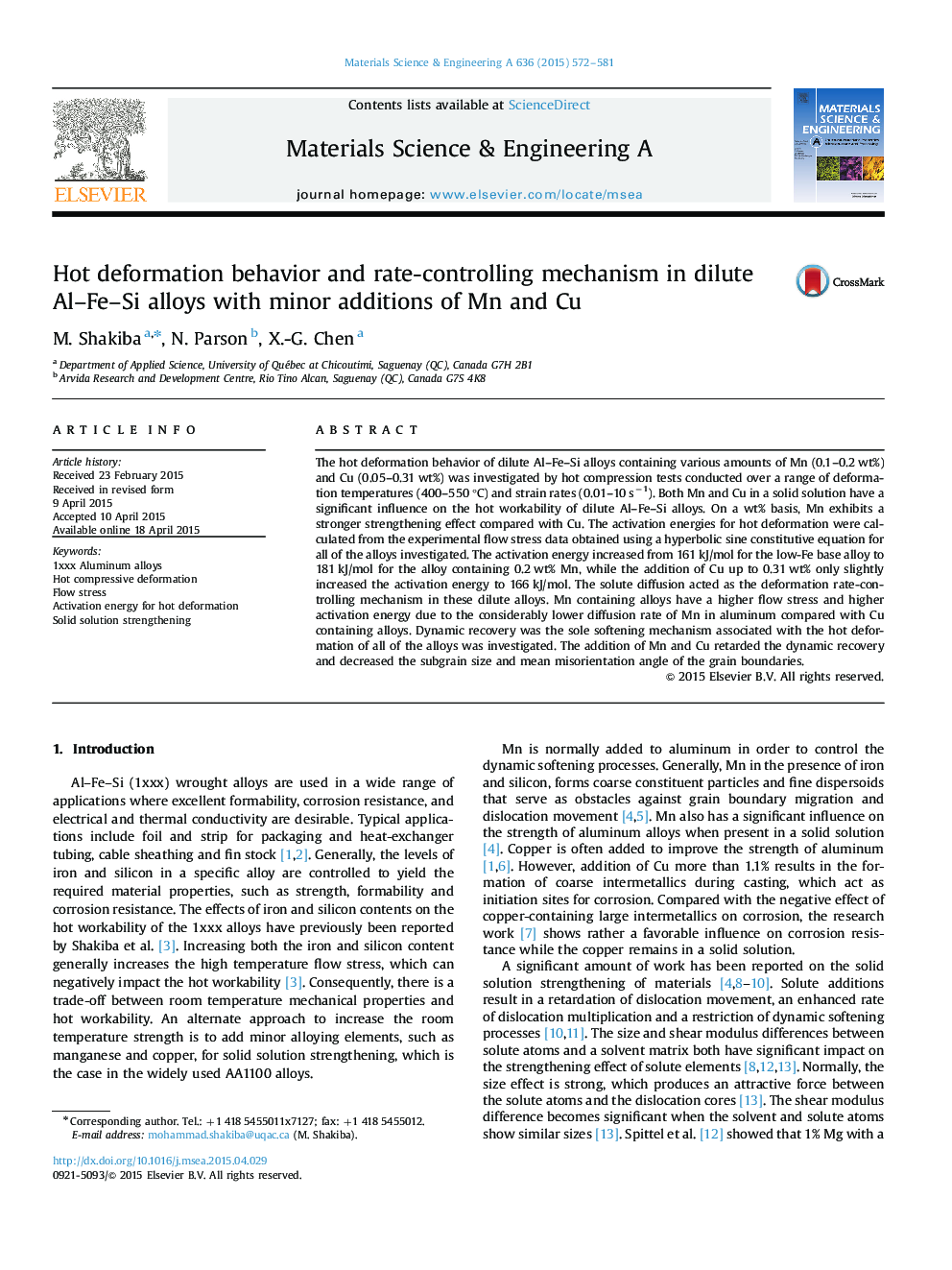| Article ID | Journal | Published Year | Pages | File Type |
|---|---|---|---|---|
| 1574264 | Materials Science and Engineering: A | 2015 | 10 Pages |
Abstract
The hot deformation behavior of dilute Al-Fe-Si alloys containing various amounts of Mn (0.1-0.2 wt%) and Cu (0.05-0.31 wt%) was investigated by hot compression tests conducted over a range of deformation temperatures (400-550 °C) and strain rates (0.01-10 sâ1). Both Mn and Cu in a solid solution have a significant influence on the hot workability of dilute Al-Fe-Si alloys. On a wt% basis, Mn exhibits a stronger strengthening effect compared with Cu. The activation energies for hot deformation were calculated from the experimental flow stress data obtained using a hyperbolic sine constitutive equation for all of the alloys investigated. The activation energy increased from 161 kJ/mol for the low-Fe base alloy to 181 kJ/mol for the alloy containing 0.2 wt% Mn, while the addition of Cu up to 0.31 wt% only slightly increased the activation energy to 166 kJ/mol. The solute diffusion acted as the deformation rate-controlling mechanism in these dilute alloys. Mn containing alloys have a higher flow stress and higher activation energy due to the considerably lower diffusion rate of Mn in aluminum compared with Cu containing alloys. Dynamic recovery was the sole softening mechanism associated with the hot deformation of all of the alloys was investigated. The addition of Mn and Cu retarded the dynamic recovery and decreased the subgrain size and mean misorientation angle of the grain boundaries.
Related Topics
Physical Sciences and Engineering
Materials Science
Materials Science (General)
Authors
M. Shakiba, N. Parson, X.-G. Chen,
